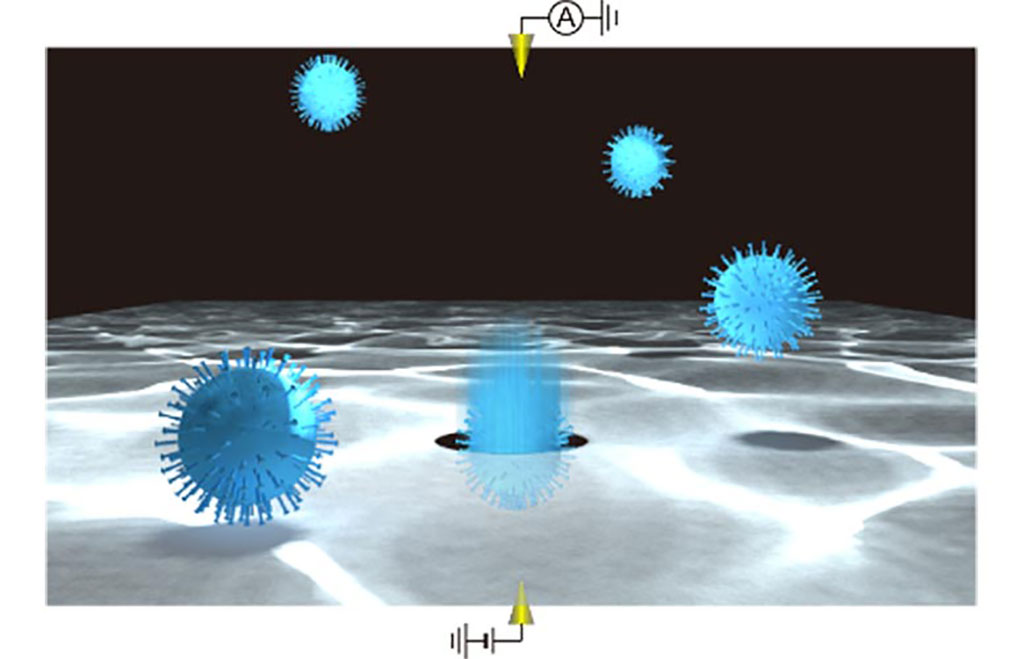Machine Learning Algorithm for Identifying Single Virus Particles Could Lead to More Accurate, Fast COVID-19 Test
By LabMedica International staff writers
Posted on 30 Nov 2020
A new system for single-virion identification of common respiratory pathogens that uses a machine learning algorithm trained on changes in current across silicon nanopores may lead to fast and accurate screening tests for diseases like COVID-19 and influenza.Posted on 30 Nov 2020
Scientists at Osaka University (Suita, Japan) have introduced a new system using silicon nanopores sensitive enough to detect even a single virus particle when coupled with a machine learning algorithm. In this method, a silicon nitride layer just 50 nm thick suspended on a silicon wafer has tiny nanopores added, which are themselves only 300 nm in diameter. When a voltage difference is applied to the solution on either side of the wafer, ions travel through the nanopores in a process called electrophoresis. The motion of the ions can be monitored by the current they generate, and when a viral particle enters a nanopore, it blocks some of the ions from passing through, leading to a transient dip in current. Each dip reflects the physical properties of the particle, such as volume, surface charge, and shape, so they can be used to identify the kind of virus.

Image: Single virus particle detections using a solid-state nanopore (Photo courtesy of Osaka University)
The natural variation in the physical properties of virus particles had previously hindered implementation of this approach. However, using machine learning, the team built a classification algorithm trained with signals from known viruses to determine the identity of new samples. The computer can discriminate the differences in electrical current waveforms that cannot be identified by human eyes, which enables highly accurate virus classification. In addition to coronavirus, the system was tested with similar pathogens - respiratory syncytial virus, adenovirus, influenza A, and influenza B. The team believes that coronaviruses are especially well-suited for this technique since their spiky outer proteins may even allow different strains to be classified separately. Compared with other rapid viral tests like polymerase chain reaction or antibody-based screens, the new method is much faster and does not require costly reagents, which may lead to improved diagnostic tests for emerging viral particles that cause infectious diseases such as COVID-19.
“By combining single-particle nanopore sensing with artificial intelligence, we were able to achieve highly accurate identification of multiple viral species,” said senior author Makusu Tsutsui.
“This work will help with the development of a virus test kit that outperforms conventional viral inspection methods,” added last author Tomoji Kawai.
Related Links:
Osaka University













